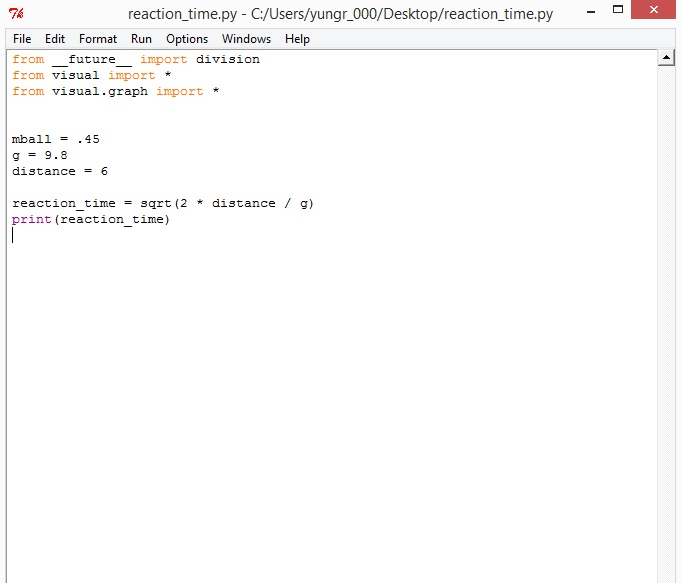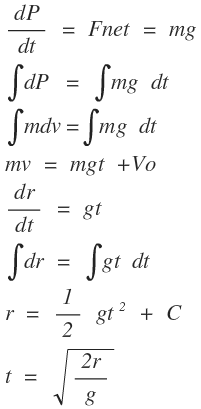Reaction Time: Difference between revisions
No edit summary |
No edit summary |
||
| Line 14: | Line 14: | ||
[[File:reacteq.png]] | [[File:reacteq.png]] | ||
===A Computational Model=== | ===A Computational Model=== | ||
This picture shows a vPython code that can solve for the reaction time. | |||
[[File:React.jpg]] | [[File:React.jpg]] | ||
==Examples== | ==Examples== | ||
https://www.youtube.com/watch?v=zu1yde207qU&feature=youtu.be | https://www.youtube.com/watch?v=zu1yde207qU&feature=youtu.be | ||
==History== | ==History== | ||
| Line 32: | Line 24: | ||
Put this idea in historical context. Give the reader the Who, What, When, Where, and Why. | Put this idea in historical context. Give the reader the Who, What, When, Where, and Why. | ||
===Further reading=== | ===Further reading=== | ||
| Line 42: | Line 31: | ||
by, Daisy Yuhas | by, Daisy Yuhas | ||
Books, Articles or other print media on this topic | Books, Articles or other print media on this topic | ||
Revision as of 21:35, 5 December 2015
By, Russell Dawkins
Reaction time is a physical phenomenon that can be calculated using the momentum principle.
The Main Idea
Your reaction time is how long it takes you to respond to an event. This can be measured one of two ways. One way to measure reaction times is given the distance that an object traveled since you reacted to it. Another application of this formula is to solve for the distance that the object caught travels based on how long it took to catch it.
A Mathematical Model
This picture shows how the momentum principle can be used to derive the two equations associated with reaction time. One equation solves for time and the other solves for the distance.
A Computational Model
This picture shows a vPython code that can solve for the reaction time.

Examples
https://www.youtube.com/watch?v=zu1yde207qU&feature=youtu.be
History
Put this idea in historical context. Give the reader the Who, What, When, Where, and Why.
Further reading
A Study in Reaction Time and Movement
by, Thomas Verner Moore
Speedy Science: How Fast Can You React?
by, Daisy Yuhas
Books, Articles or other print media on this topic
